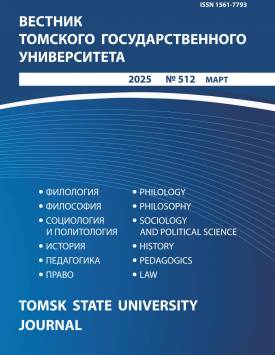"Father of the monks": Sources of the spiritual authority of the abbot in Visigothic monasteries in the 7th century
The article examines the status and functions of the abbot in the monasteries of early medieval 7th-century Spain. The sources for the article are three rules from the Visigothic period: the Rule of Isidore of Seville, the Rule of Fructuosus of Braga, and the "Common Rule" (Regula communis), as well as the Pact. The evolution of the abbot's status in the Kingdom of Toledo throughout the 7th century is traced. The status of the abbot and his authority in the Kingdom of Toledo is generally analogous to the position of the abbot in the monasteries of the rest of medieval Europe. Its distinctive feature lies in the fact that the abbot bears colossal responsibility for the salvation of the souls of the monks entrusted to him, which grants him a special status but also obliges him to adhere to a certain moral and ascetic way of life. The abbot controls the life and daily routine of the novices to the extent that any action of a monk must be approved and blessed by the abbot or the elders. The abbot is present at daily readings, explains difficult and obscure passages from the Holy Scripture and hagiographic literature, and controls the monks' reading. He is also responsible for organizing religious services and prayers. The abbot is responsible for the discipline and behavior of the novices; to correct the monks, he can apply a wide range of punishments: from public condemnation to excommunication and corporal punishment with rods. In Isidore's Rule, the abbot's power is very great and is practically unlimited by anyone or anything, except for the requirements to observe the Rule and to be an example for the brethren. Fructuosus presents a broader list of demands for the abbot; furthermore, the abbot's judicial and disciplinary power is limited. The Pact indicates the right of the novices to express a grievance to the abbot that he is leading an impious life and abusing his power (although, even then, the monks must still show respect to the abbot by kissing his feet). If the abbot does not wish to resolve the conflict peacefully, the brethren can seek help from the bishop. Thus, the Rule of Fructuosus and the "Common Rule" outline mechanisms for controlling the abbot's activities, both by the bishop or other abbots and by the brethren themselves. The author declares no conflicts of interests.
Keywords
Fructuosus of Braga, "Regula communis", Isidore of Seville, history of Church, Visigothic Kingdom of Toledo, monastic rulesAuthors
| Name | Organization | |
| Marey Elena S. | Saint Tikhon's Orthodox University for the Humanities; National Research University Higher School of Economics | elena.fontis@gmail.com |
References

"Father of the monks": Sources of the spiritual authority of the abbot in Visigothic monasteries in the 7th century | Vestnik Tomskogo gosudarstvennogo universiteta – Tomsk State University Journal. 2025. № 512. DOI: 10.17223/15617793/512/14
